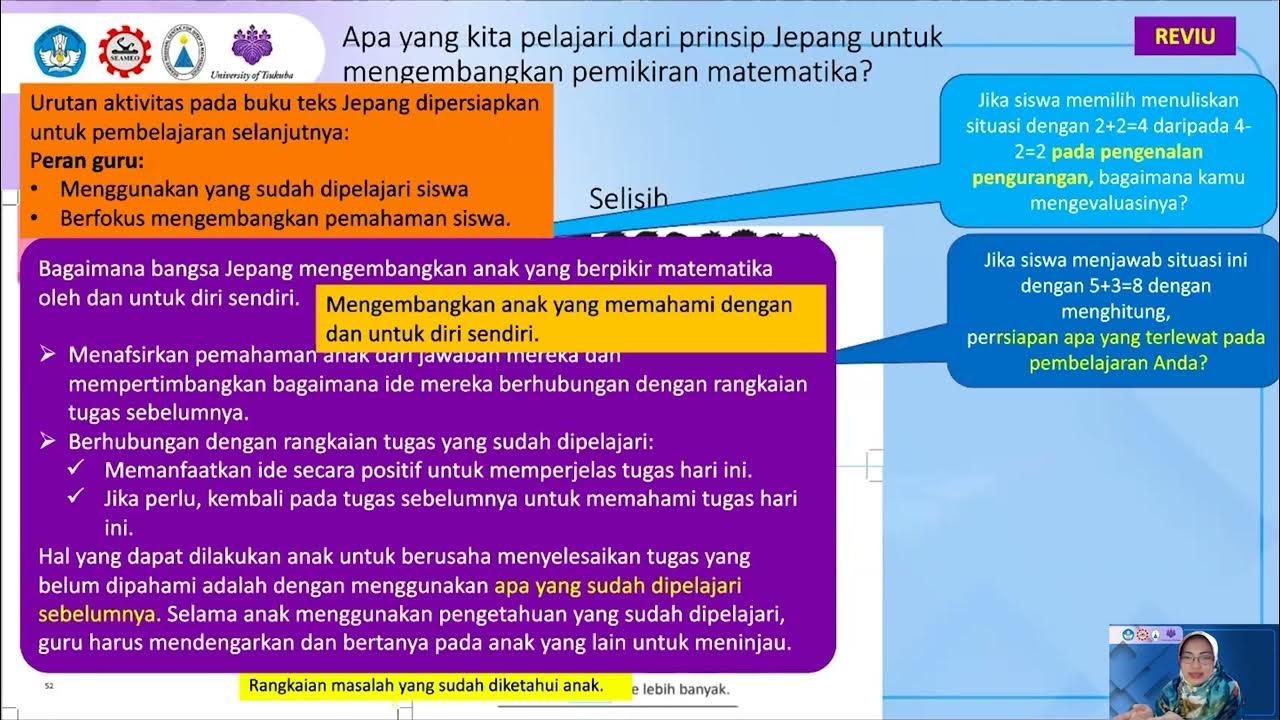Classroom Questioning Strategies
Summary
TLDRIn this educational video transcript, teachers engage students in various discussions about historical and mathematical concepts. They explore the division of Korea, the impact of the United States and USSR, and delve into North Korea's nuclear program. Teachers also address mathematical functions like sine, cosine, and tangent, emphasizing the importance of domain in trigonometry. The transcript highlights effective questioning techniques to foster critical thinking, such as using Bloom's taxonomy, encouraging group discussions, and employing 'wait time' for deeper understanding. The video underscores the value of close reading and backward design planning to enhance comprehension and engagement in the classroom.
Takeaways
- 📚 Teachers are discussing the historical split of Korea and its causes, highlighting the influence of the United States and USSR.
- 🏫 The class is learning about North Korea's nuclear program through an article that is being annotated to aid comprehension.
- 🤔 Teachers emphasize the importance of preparing questions in advance to ensure a deeper level of questioning and engagement.
- 👨🏫 Mr. Doll is exploring mathematical concepts like domain and range using trigonometric functions in the context of angles in a triangle.
- 👩🏫 Ms. Gapp is guiding students to think critically about themes in literature by asking them to justify their interpretations.
- 📈 Mr. Tacchia is using satire as a teaching tool to help students understand how authors convey messages through humor and exaggeration.
- 👥 Group discussions are encouraged to allow students to share their thoughts and learn from their peers before answering in front of the class.
- 📝 Close reading strategies are being used to develop text-dependent questions that require students to think deeply about the text.
- 🚌 Ms. Rolland is using a real-world example about seat belts on school buses to connect the text to students' lives and provoke thought.
- 🎯 Backwards design planning is mentioned as a method for creating questions and instructional tools with clear learning objectives in mind.
Q & A
What is the main question Ms. Amberson asks her students about the division of Korea?
-Ms. Amberson asks her students if they agree with the author that the United States and the USSR had enough influence to cause the split of Korea into separate countries.
What teaching method does Ms. Amberson use to prepare questions for her lessons?
-Ms. Amberson uses the method of annotating text with post-it notes that contain question stems and sample questions for different levels of questioning based on Bloom's and Costas.
Who is the current leader of North Korea mentioned in the script?
-The current leader of North Korea mentioned in the script is Kim Jong Un, the son of Kim Jong Il.
What is the strategy Mr. Doll uses to ensure he asks higher level questions during his lessons?
-Mr. Doll prepares his questions in advance by creating stems and pointing to places in the lesson where they would be appropriate, to avoid relying on basic questions and to push his scholars.
How does Mr. Doll use the Mobi Interwrite Board in his teaching?
-Mr. Doll uses the Mobi Interwrite Board to engage in direct instruction and as a quick guide by placing questions on it, allowing him to reference them during his lesson.
What does Ms. Gapp ask her students to identify as a theme in the book they are discussing?
-Ms. Gapp asks her students to identify the theme of the book, and one student, Diana, claims that the theme is 'the grass isn't greener on the other side'.
How does Mr. Tacchia encourage student participation in discussing Swift's use of satire?
-Mr. Tacchia encourages student participation by having them do a quick pair share, allowing more students to interact and verbalize their thoughts before answering in front of the entire class.
What is the main question Ms. Rolland asks her students after reading a text about seat belts on school buses?
-Ms. Rolland asks her students why they think Dawn wants school buses to have seat belts for their riders.
What is the teaching strategy Ms. Rolland uses to develop questions for her students?
-Ms. Rolland uses backward design planning, starting with the end goal in mind and developing instructional tools and different levels of questions to accomplish those goals.
What is the importance of allowing students time to think about a question before answering, as discussed in the script?
-Allowing students time to think about a question is important because it encourages every student to engage deeply with the material, process the information, and come up with their own ideas, leading to more meaningful learning.
How does the script suggest teachers can handle students who answer questions correctly?
-The script suggests that when a student answers a question correctly, teachers can stretch the question a bit more to increase rigor, asking follow-up questions like 'Why do you think that?' or 'What in the text stated that?' to further engage the student.
Outlines

This section is available to paid users only. Please upgrade to access this part.
Upgrade NowMindmap

This section is available to paid users only. Please upgrade to access this part.
Upgrade NowKeywords

This section is available to paid users only. Please upgrade to access this part.
Upgrade NowHighlights

This section is available to paid users only. Please upgrade to access this part.
Upgrade NowTranscripts

This section is available to paid users only. Please upgrade to access this part.
Upgrade Now5.0 / 5 (0 votes)





